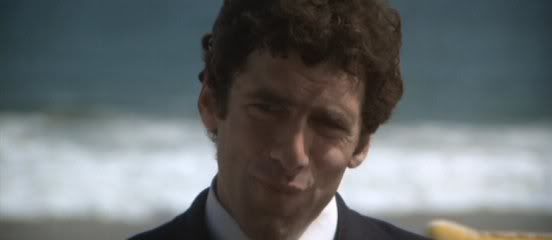I take a better picture now, but business hasn't been as good as it used to be.

Raymond Chandler published The Long Goodbye, his penultimate Philip Marlowe novel, in 1953. When Robert Altman brought it to the screen 20 years later he took the cockeyed approach of setting the story in the present but keeping Marlowe decidedly -- and defiantly -- anachronistic. Despite living in a Los Angeles obsessed with health food, all-night grocery stores and yoga, he still smokes up a storm, drives a vintage car and has principles that can't be shaken. Altman also had a terrific script by Leigh Brackett, who had previously adapted Chandler's The Big Sleep, to work with and a lead actor (Elliott Gould) who could embody the very specific kind of character he was trying to evoke.
As if to announce right off the bat that this isn't your typical Marlowe, Altman introduces Gould being woken up in the middle of the night by his very assertive tabby, which is so picky it will only eat a certain brand of cat food. After he fails to procure it, the cat walks out on him, which Gould doesn't even have a chance to brood over before an old friend (Jim Bouton) arrives at his door and asks him for a ride to Tijuana. That simple act of friendship gets Gould into a heap of trouble when Bouton's wife turns up dead and Bouton is the prime suspect. Gould's refusal to cooperate with the police lands him in jail, but he eventually gets released when it comes out that Bouton has committed suicide in Mexico. Case closed.
Almost immediately, Gould is hired by beautiful socialite Nina Van Pallandt to find her writer husband Sterling Hayden, a notorious drunk who has been missing for a week. Gould eventually tracks him down at the private clinic of quack doctor Henry Gibson, who attempts to shake Hayden down for $4,400 and proves to be very persistent and persuasive. That's mere pocket change, though, compared to what ruthless gangster Mark Rydell (playing a character who was entirely invented for the film) believes Gould is holding out on him. (Turns out Bouton was transporting $350,000 for Rydell and that went missing when Bouton did, and since Gould is one who drove him to Mexico, well, what else is Rydell to think?) So case not closed after all.
Altman and Brackett take a great many liberties with Chandler's story, especially in the latter going when it plays out in a vastly different fashion, but they do manage to bring out the brutal violence that earlier adaptations made in a more genteel age had to leave out. (Once seen, the moment where Rydell disfigures his girlfriend's face with a Coke bottle in order to convince Gould that he means business is hard to forget.) And Marlowe's verbal dexterity and sarcasm is kept intact, even if Gould is given to throwing most of his lines away. If you pay attention, though (and if there was ever a film where it's imperative that you pay attention, it is this one), it is possible to catch them.